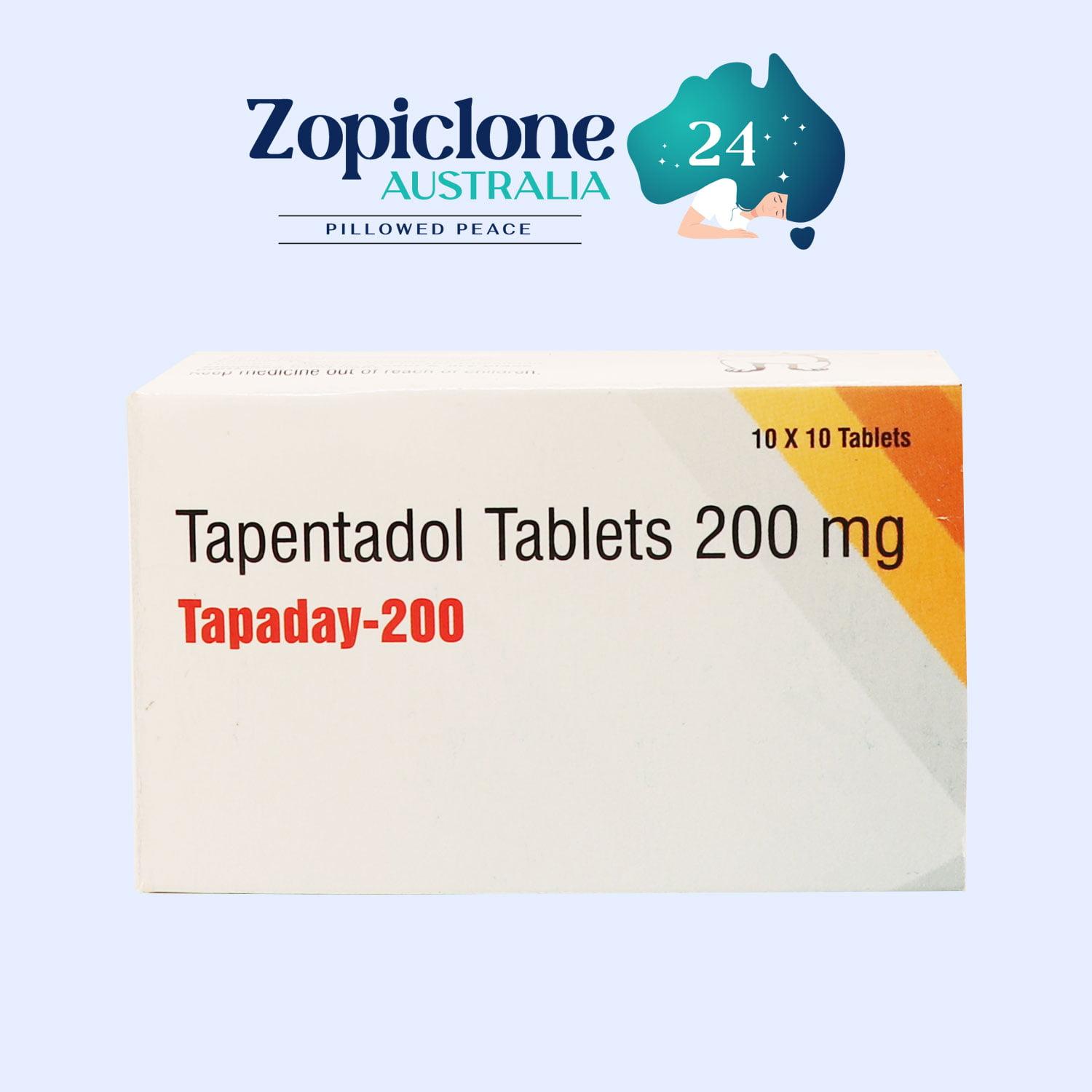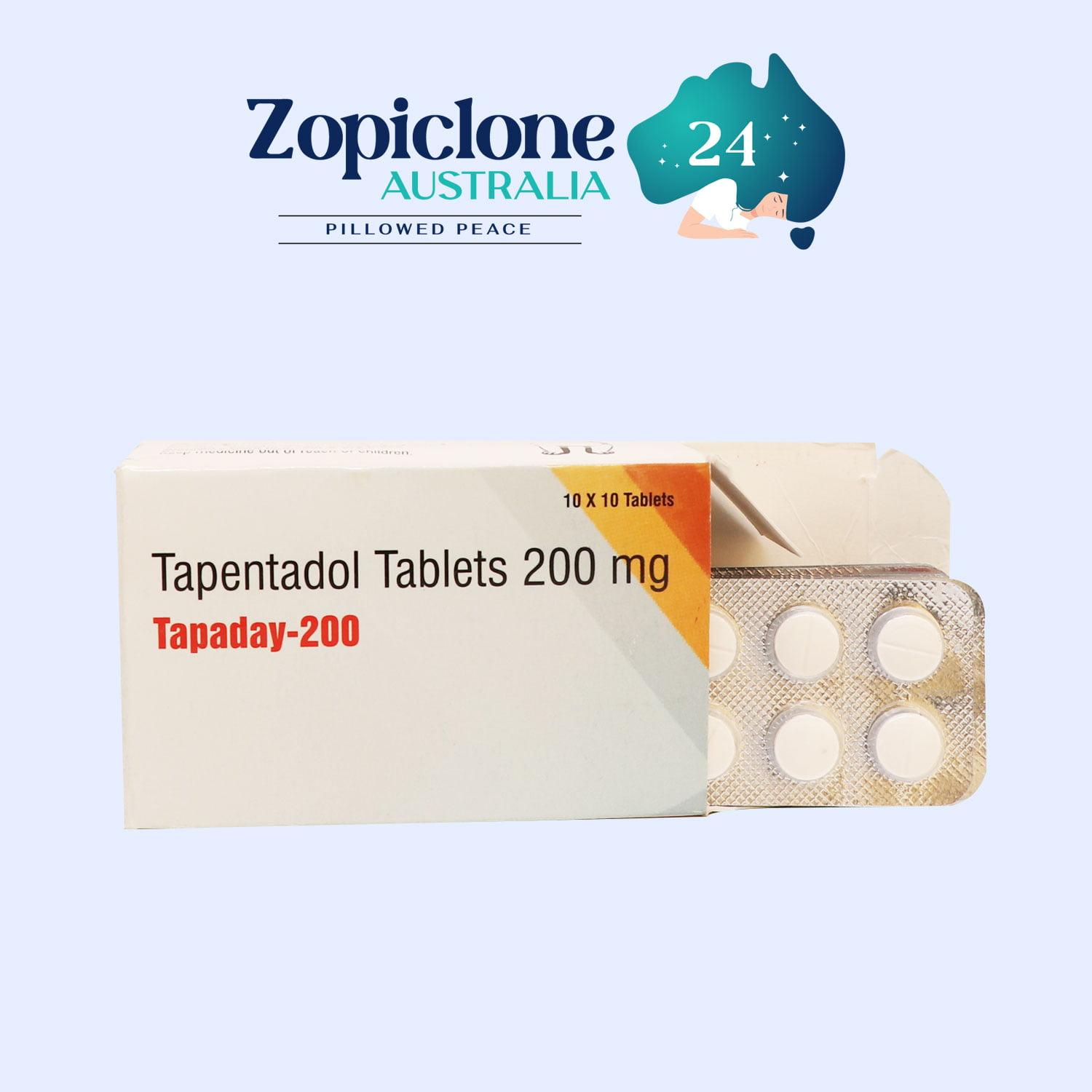About Tapentadol 200mg Tablets
Tapentadol 200 mg tablets are a prescription medication used to manage moderate to severe pain. They belong to the opioid analgesic class and work by binding to opioid receptors and inhibiting norepinephrine reuptake in the central nervous system. This dual action provides effective pain relief for conditions such as chronic pain, neuropathic pain, and post-surgical pain. Tapentadol should be taken exactly as prescribed by your healthcare provider, as it carries a risk of dependence and other side effects. Avoid alcohol while taking tapentadol and inform your healthcare provider about any other medications you are taking to prevent potential drug interactions.
Uses of Tapentadol 200mg Tablets
Moderate to severe pain
Medicinal Benefits
Tapentadol 200 mg tablets offer several medicinal benefits for managing moderate to severe pain:
Effective Pain Relief:![]() Tapentadol provides effective pain relief for various types of pain, including chronic pain, neuropathic pain, and post-surgical pain.
Tapentadol provides effective pain relief for various types of pain, including chronic pain, neuropathic pain, and post-surgical pain.
Dual Mechanism of Action: It works through a dual mechanism—binding to opioid receptors and inhibiting norepinephrine reuptake in the central nervous system—providing a more comprehensive approach to pain management.
Lower Risk of Gastrointestinal Side Effects: Compared to some other opioids, tapentadol may have a lower risk of causing gastrointestinal side effects such as constipation.
Improved Quality of Life: By effectively managing pain, tapentadol can help improve the quality of life for individuals suffering from persistent pain.
Flexible Dosing: Tapentadol is available in various strengths and can be adjusted according to the patient’s needs, allowing for tailored pain management.
Directions for Use
When taking Tapentadol 200 mg tablets, follow these directions for use:
Follow Prescribed Dosage: Take Tapentadol exactly as prescribed by
your healthcare provider.
Take with Water: Down a full glass of water and the tablet whole. The tablet should not be broken, chewed, or crushed since this could alter how the drug is absorbed and released.
With or Without Food: Tapentadol can be taken with or without food. It might be helpful to take it with food if you have stomach trouble.
Consistent Timing: Take the medication at the same time each day to maintain consistent levels of the drug in your system.
Avoid Alcohol: Avoid alcohol while taking Tapentadol, as it can increase the risk of side effects such as drowsiness and dizziness.
Monitor for Side Effects: Be aware of potential side effects such as dizziness, nausea, or constipation. Contact your healthcare provider if you experience severe or persistent side effects.
Adjustments: If you miss a dose, take it as soon as you remember, unless it’s close to the time for your next dose. To make up for a missing dose, never take two doses at once.
Consult Healthcare Provider: If you need to stop taking Tapentadol, consult your healthcare provider for guidance on how to safely taper off the medication to avoid withdrawal symptoms.
Keep Out of Reach: Store the medication in a secure place out of reach of children and pets.
Storage
When storing Tapentadol 200 mg tablets, follow these guidelines:
Room Temperature: Store Tapentadol tablets at room temperature, between 15-30°C (59-86°F).
Avoid Moisture and Heat: Keep the medication away from moisture and direct sunlight. Avoid storing the tablets in bathrooms or other damp environments.
Keep in Original Packaging: Store the tablets in their original container with the lid tightly closed to protect them from moisture and contamination.
Secure Location: Keep the medication in a secure location, out of reach of children, pets, and anyone who should not have access to it.
Check Expiry Date: Regularly check the expiry date on the packaging, and dispose of any expired medication according to local regulations.
Disposal: Dispose of unused or expired medication responsibly to prevent accidental ingestion by others. Consult your pharmacist for guidance on proper disposal methods.
Do Not Transfer: Avoid transferring Tapentadol tablets to another container, as this can lead to improper storage conditions and confusion.
Side Effects of Tapentadol
Tapentadol 200 mg tablets can cause various side effects, some of which may be common while others are less frequent but more severe. It’s important to be aware of these potential side effects and to contact your healthcare provider if you experience any concerning symptoms. Common side effects of Tapentadol include:
Drowsiness: Tapentadol can cause drowsiness, which may affect your ability to drive or operate machinery.
Dizziness: Dizziness is a common side effect and may increase the risk of falls, especially in elderly patients.
Nausea and Vomiting: Some individuals may experience gastrointestinal disturbances such as nausea and vomiting.
Constipation: Tapentadol may slow down bowel movements, leading to constipation.
Headache: Some patients may experience headaches while taking Tapentadol.
Dry Mouth: Tapentadol can cause a dry mouth, which may lead to discomfort or difficulty swallowing.
Sweating: Increased sweating may occur in some individuals taking Tapentadol.
The following are less frequent but possibly dangerous adverse effects:
Respiratory Depression: Tapentadol may cause slow or shallow breathing, which can be life-threatening. Immediately get medical help if you encounter this condition.
Serotonin Syndrome: When taken with other medications that increase serotonin levels, Tapentadol may cause serotonin syndrome, a potentially life-threatening condition.
Allergic Reactions: Severe allergic reactions, including rash, itching, swelling, or difficulty breathing, may occur in rare cases.
Dependency and Withdrawal: Long-term use of Tapentadol can lead to physical dependence and withdrawal symptoms upon discontinuation.
In-Depth Precautions and Warning
When taking Tapentadol 200 mg tablets, it’s essential to be aware of several precautions and warnings to ensure safe and effective use of the medication:
Risk of Dependence: Tapentadol is an opioid medication and carries a risk of physical and psychological dependence. Use it only as prescribed and for the shortest duration necessary.
Avoid Alcohol: Alcohol consumption should be avoided while taking Tapentadol, as it can increase the risk of respiratory depression, drowsiness, and other side effects.
Central Nervous System Depression: Tapentadol may cause central nervous system depression, leading to drowsiness and dizziness. Until you are certain of how the drug will effect you, do not operate heavy machinery or drive.
Respiratory Depression: Tapentadol may cause slow or shallow breathing, especially at higher doses or when combined with other medications that depress the central nervous system.
Serotonin Syndrome: Tapentadol may increase the risk of serotonin syndrome, particularly when taken with other medications that affect serotonin levels (e.g., SSRIs, SNRIs, MAOIs).
Hypersensitivity Reactions: Allergic reactions, including rash, itching, swelling, and difficulty breathing, may occur.
Interactions with Other Medications: Tapentadol may interact with other medications, including sedatives, tranquilizers, other opioids, and certain antidepressants.
Elderly and Pediatric Use: Caution is advised when using Tapentadol in elderly patients, as they may be more sensitive to its effects. Tapentadol is not typically recommended for pediatric patients.
Liver and Kidney Function: Inform your healthcare provider if you have liver or kidney problems, as these conditions may affect how your body processes Tapentadol.
Pregnancy and Breastfeeding: Tapentadol may not be safe for use during pregnancy or breastfeeding. Tell your doctor if you intend to get pregnant, are already nursing, or are not planning to get pregnant.
Always follow your healthcare provider’s instructions and discuss any questions or concerns with them. Contact your provider immediately if you experience any unusual or severe symptoms while taking Tapentadol.
Drug-Drug Interactions Checker List:
When taking Tapentadol 200 mg tablets, it’s important to be aware of potential drug-drug interactions that could affect your treatment. Some medications may interact with Tapentadol and lead to increased side effects or reduced efficacy. Here are some common types of drug interactions to be cautious of:
Central Nervous System Depressants: Tapentadol can enhance the sedative effects of other CNS depressants such as benzodiazepines, barbiturates, other opioids, and alcohol. This may increase the risk of drowsiness, dizziness, and respiratory depression.
Serotonergic Drugs: Combining Tapentadol with drugs that increase serotonin levels (e.g., selective serotonin reuptake inhibitors (SSRIs), serotonin-norepinephrine reuptake inhibitors (SNRIs), tricyclic antidepressants, MAO inhibitors) may increase the risk of serotonin syndrome, a potentially life-threatening condition.
Anticholinergic Drugs: Tapentadol may enhance the effects of anticholinergic drugs, potentially worsening constipation and other anticholinergic side effects.
Antihypertensive Drugs: Tapentadol may interact with antihypertensive drugs, potentially leading to changes in blood pressure.
Other Opioid Analgesics: Avoid combining Tapentadol with other opioid analgesics due to the increased risk of respiratory depression and other side effects.
Enzyme Inhibitors and Inducers: Medications that inhibit or induce liver enzymes (e.g., CYP3A4) may affect Tapentadol’s metabolism, leading to altered drug levels in the body.
Blood Thinners: Tapentadol may interact with blood thinners such as warfarin, affecting their efficacy and increasing the risk of bleeding.
Safety Advice
Here’s some safety advice for Tapentadol 200 mg tablets concerning specific situations:
Alcohol: Unsafe
Alcohol: Avoid consuming alcohol while taking Tapentadol. Alcohol can increase the risk of drowsiness, dizziness, and respiratory depression. Combining alcohol with Tapentadol can also enhance the potential for dependence and other serious side effects.
Pregnancy: Consult Your Doctor
Pregnancy: Tapentadol should be used with caution during pregnancy and only if the potential benefits outweigh the risks. Tapentadol can cause harm to the fetus, including potential withdrawal symptoms in the newborn. Always consult your healthcare provider before using Tapentadol if you are pregnant or planning to become pregnant.
Breastfeeding: Consult Your Doctor
Breastfeeding: Tapentadol may pass into breast milk and could affect the nursing infant. It’s important to discuss the risks and benefits of using Tapentadol while breastfeeding with your healthcare provider.
Driving Unsafe: ![]() Driving: Tapentadol can cause drowsiness and dizziness, which can impair your ability to drive or operate machinery safely. Avoid such activities until you know how Tapentadol affects you.
Driving: Tapentadol can cause drowsiness and dizziness, which can impair your ability to drive or operate machinery safely. Avoid such activities until you know how Tapentadol affects you.
Liver: Caution
Liver: If you have liver problems, inform your healthcare provider before taking Tapentadol. Liver impairment can affect the metabolism and elimination of the drug, potentially leading to higher levels of Tapentadol in your system and increased risk of side effects.
Kidney: Caution
Kidney: Kidney function can also impact how Tapentadol is processed and eliminated from the body. If you have kidney issues, your healthcare provider may need to adjust your dosage or closely monitor your response to the medication.
Children: Caution
Children: Tapentadol is generally not recommended for use in children under 18 years old due to the risk of respiratory depression and other serious side effects. Before giving a child any medication, always get medical advice.














Reviews
There are no reviews yet.